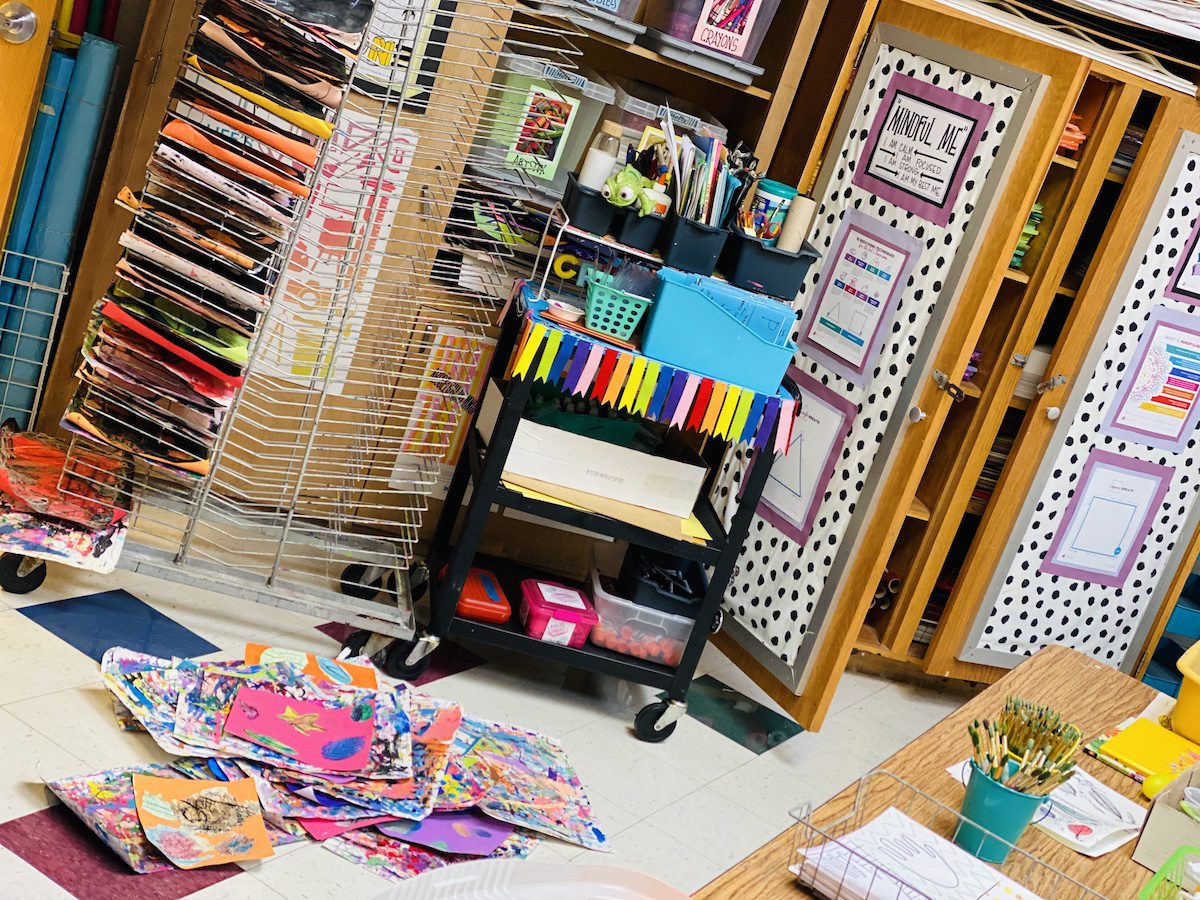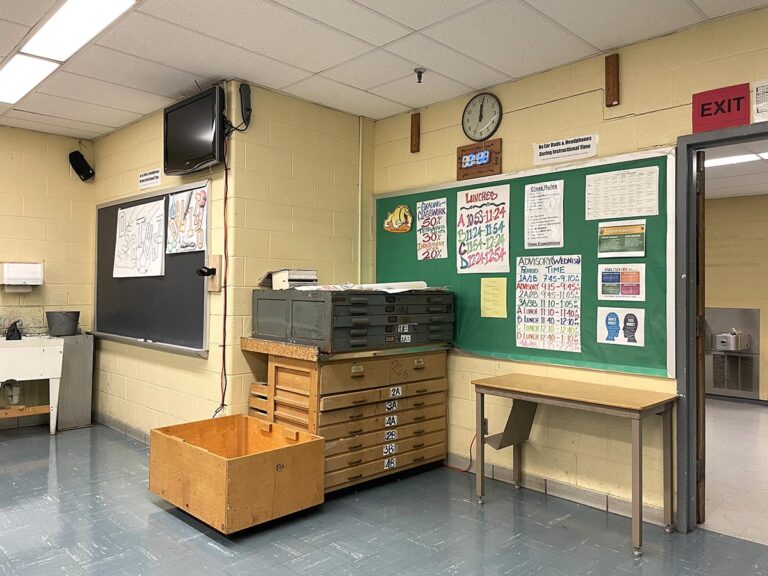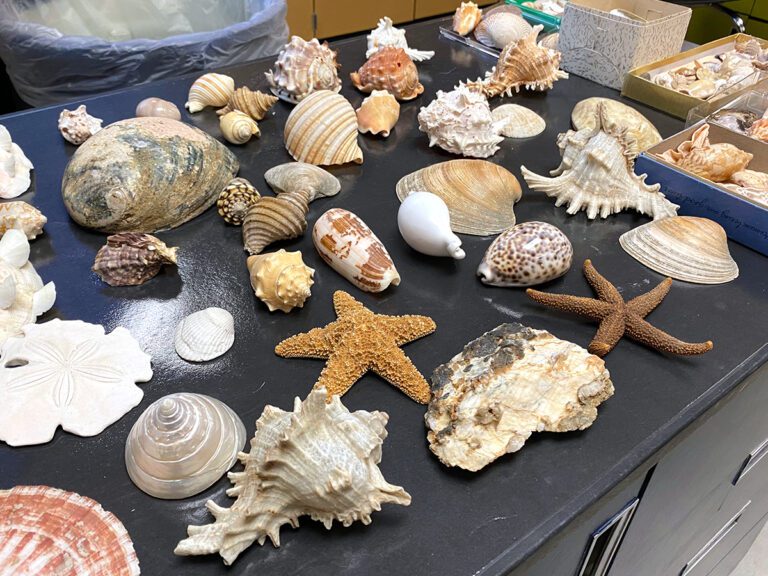Return to Learn with The Art of Education University
Have you ever just walked into your classroom and wanted to lay down on the floor out of pure exhaustion? Me, too. One day, I pushed “Bart,” the art cart, into my art room and literally collapsed onto the floor in an exhausted heap. This year, I have been teaching art from a cart in addition to a handful of virtual classes. It’s certainly not impossible, but it sure can be tiring.
So, what is it really like to teach “art on a cart” during a global pandemic?
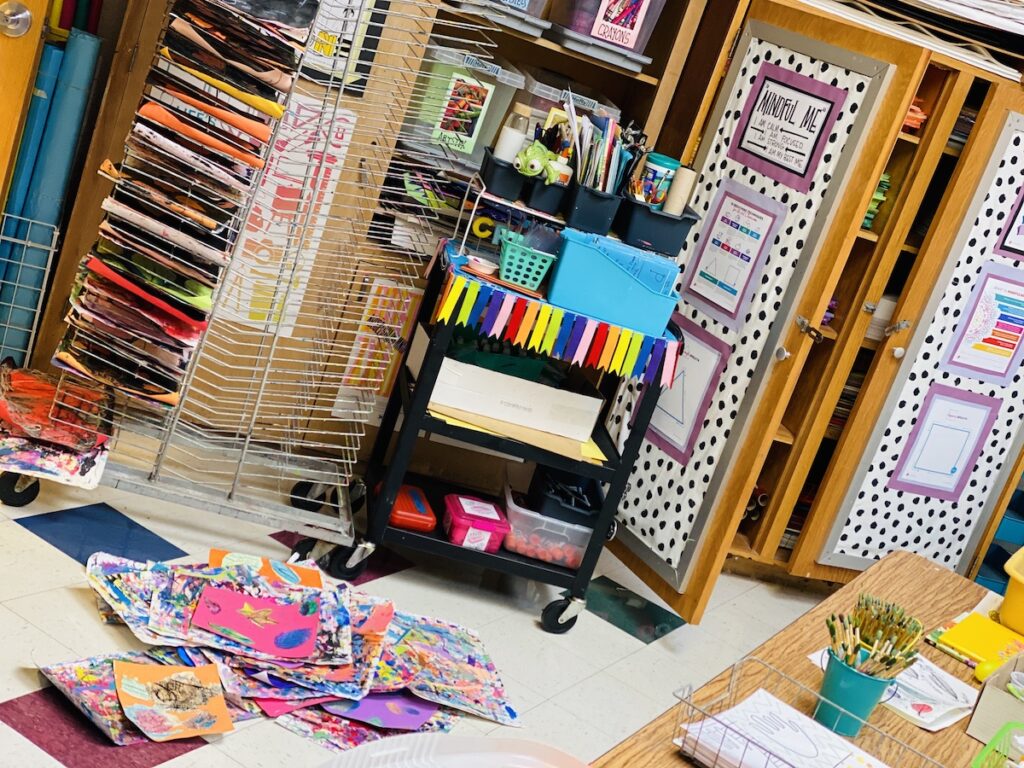
First off, the kids LOVE seeing you. Let’s face it, art teachers are basically rockstars, and students already get excited when they see you in the hall outside of art time. But, being on a cart brings this excitement to a whole new level. They are psyched to tell you all about their classroom routines, their classroom’s special management tools, and every little thing about themselves. From, “Over here is where we put the sparkle gems we earn if we have good listening,” to, “Guess what? It’s my grandma’s birthday in three days,” it’s pretty clear your students are over the moon to see you.
How to Work Smarter Not Harder with Art on a Cart This Year
Student excitement and positively connecting with your artists certainly tips the scale to make art on a cart learning much more enjoyable. The simple fact that kids are literally shouting, “Hello!” and, “Yay, art time!” to me (and Bart, the art cart) upon entering and exiting their room just shows how much these kids need us. Plus, there’s a disco ball on my art cart, so the kids know it’s going to be a party.
However, as much as I value all the positives that come from connecting with my young artists while teaching art on a cart, you may also be able to relate to a few of these things I found myself saying this year.
Here are some things I say all the time as I work with art on a cart during a pandemic:
“Sorry, I don’t have that on my cart. You’ll just need to problem solve or use a different material.”
You used to easily be able to grab an art supply from a cabinet in your art room. Now, you are restricted to what you have packed on your “little traveling art room.”
“Have you touched that art tool? Put it in the dirty bin.”
The need for sanitizing is already a big part of our current world of art education. But when you’re on a cart, streamlining this process is even more important. To eliminate the over-sharing of materials, I have students drop used materials like sharpies, gluesticks, or paintbrushes into a “dirty” bin that I sanitize at the end of the day.
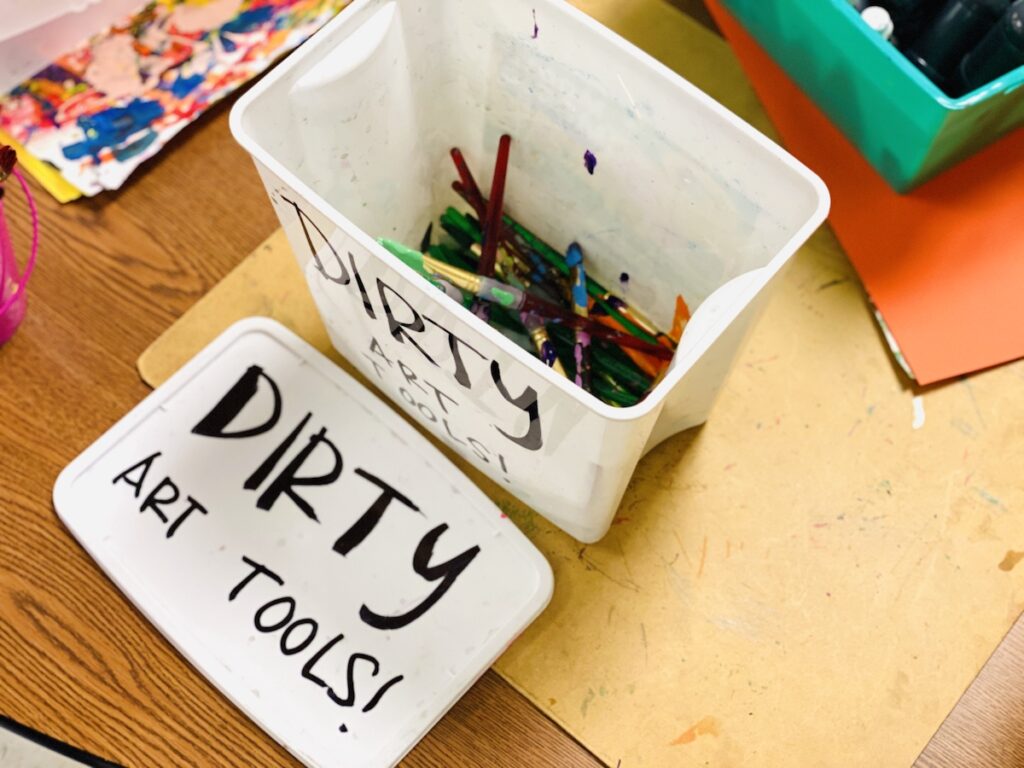
“Sorry, I’m late! We had lots to clean up in my last class.”
When your classroom teacher (otherwise known as your temporary roommate) is waiting for you to arrive for art class, it’s hard not to feel bad when you’re a few minutes late zipping around from room to room.
“Watch out; you might spill your paint! Can you please push it onto your desk a bit more?”
Our students’ desks were just not designed to be art tables. Between messy mats, water cups, artwork, and painting materials, their desks quickly become a balancing act of creativity waiting to topple onto the floor.
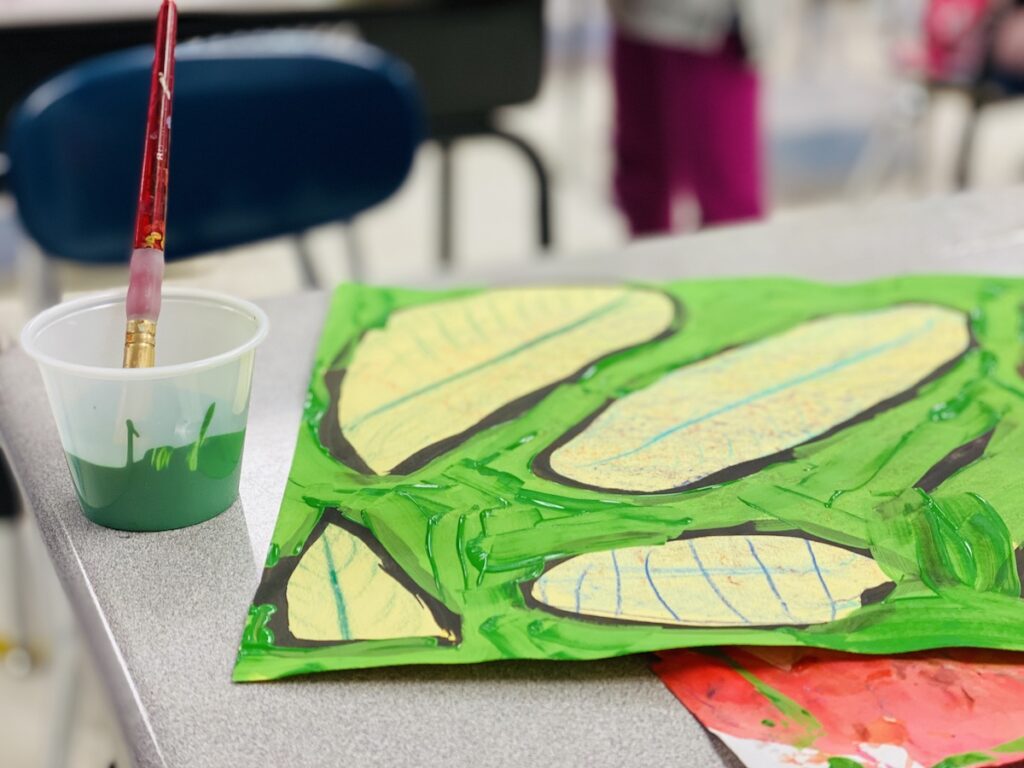
“Listen up friends; I’ll be playing calming music from my phone.”
Playing music during work time is a regular part of our artmaking routine. But between the internet being down one day, and just plain not being able to access my typical classroom work-time stations, a few classes have been serenaded by high-quality jams from my phone.
“Let me just get my videos up here. One moment everyone. Who can tell me where the volume control is on your teacher’s computer? And 10 points to anyone who can tell me where the Smartboard remote is in your classroom?”
Using technology is an essential part of making learning accessible for all students, especially if you plan to create flipped videos to demonstrate the art steps for the day. However, it can be tricky to keep track of where each teacher keeps their volume on their computer speakers, document camera settings, and remotes.
“Let’s read a book.” “Let’s do a quick breathing exercise.” “Check out this cool art video.”
I’ve quickly learned to have a pocketful of ideas for when we have a few minutes left at the end of art. Queuing up a cool art video or having a stack of art books to read on my cart is necessary for survival.
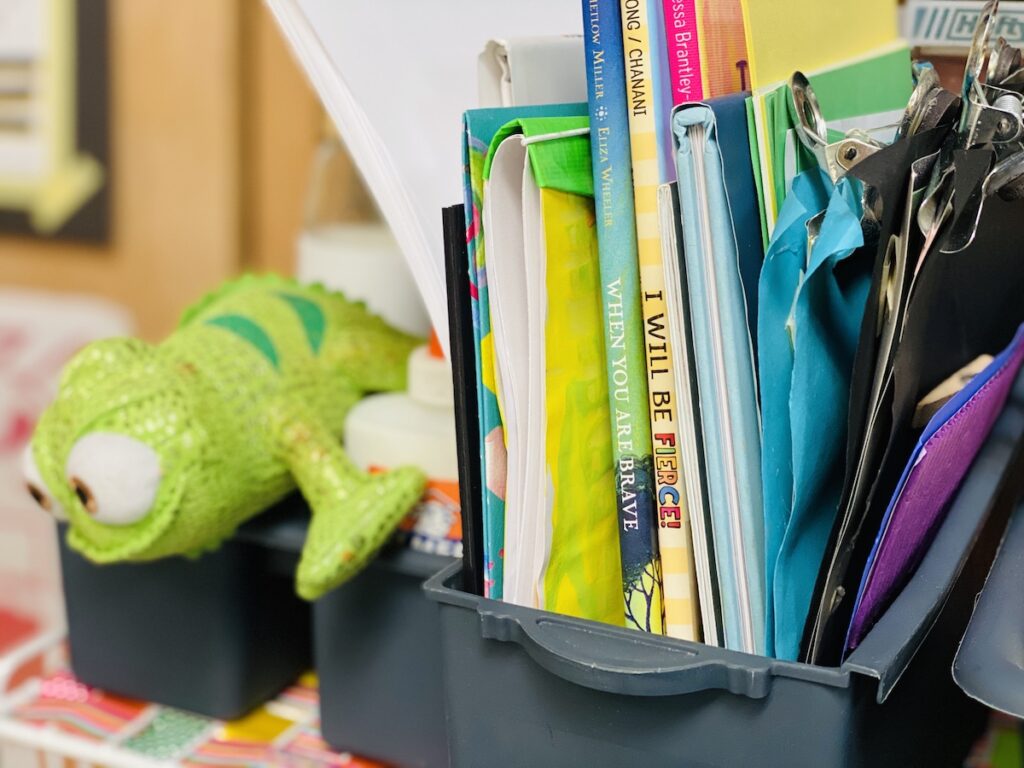
“Yes, I know there is paint on the floor. I’m working on it. Attention everyone, stay away from this area!”
One spill on the floor is utter chaos, especially when it’s a spill in a regular classroom. Whether it’s an overturned water cup or a small container of paint, you’ll be sure to hear from each and every student that there is a spill. Having a messy art towel rolled up on your cart is perfect to quickly fix these pesky spills.
“Does your class keep track of stop signs, gems, bucket fillers, clothespins, tickets, or something else for positive behavior incentives?”
Each classroom teacher has a management system that works well for them. And though I’m happy to adopt the management system, it can be difficult to remember which classes use which incentive system.
“You may work quietly in your sketchbook on some free drawing if you’re done with the art steps for today.”
As art teachers, we know kids all finish their art at staggered times. Since our students need to remain in their own space, sketchbooks seem to be the best solution for students who finish their art first.
Return to Learn with The Art of Education University
“Eyes up here, please, as I demonstrate the steps for today in mid-air. Everyone, just ignore the dripping paint.”
Typically, I have a central gathering spot where I demonstrate and model the art steps for the day. This just can’t happen. Students need to stay in their assigned seats, and many classrooms aren’t set up with a central “teacher” table. The reality is that much of my demonstrating happens in mid-air with a children’s book behind my paper for stability.
“You’ll have to excuse the squeaky wheels on my art cart. He’s really tired…he’s basically screaming.”
The first few days of pushing “Bart,” the art cart, around really took a toll on him. He started squeaking almost instantly. I joked with the students that he was “screaming” because he’s been working so hard to bring them amazing art lessons. Can you relate?
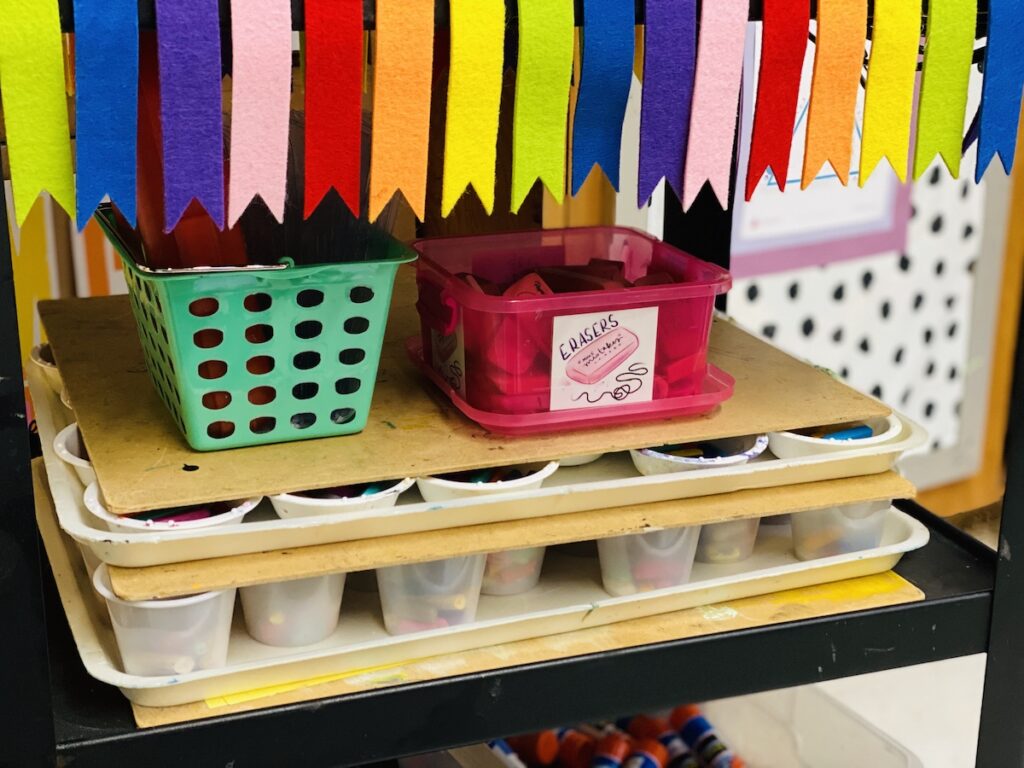
Though this list certainly isn’t exhaustive about the trials and tribulations of teaching art on a cart during a pandemic, I hope it made you giggle or at least realize you are not alone. Keep pushing (pun intended) forward and offer the best experience possible for your young artists, no matter the situation. They deserve it, and I promise it will be a lot more fun for you, too.
Have you ever taught art on a cart?
What is the hardest part of teaching from a cart?
What specific things did you need to change to account for pandemic-style teaching?
Magazine articles and podcasts are opinions of professional education contributors and do not necessarily represent the position of the Art of Education University (AOEU) or its academic offerings. Contributors use terms in the way they are most often talked about in the scope of their educational experiences.
